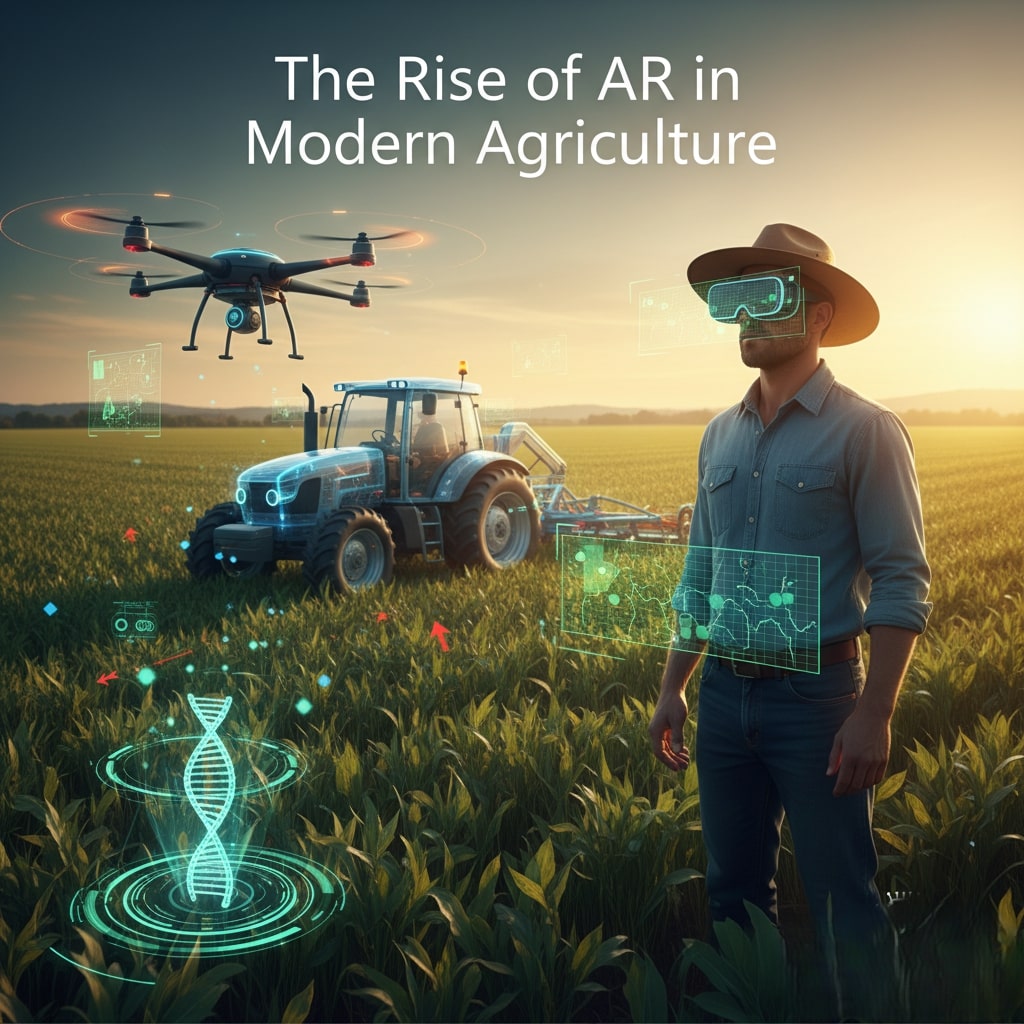Augmented reality (AR) is rapidly moving beyond gaming and industrial applications to reshape one of humanity’s oldest professions: farming. By overlaying digital information onto real-world environments, AR tools empower farmers, agronomists, and supply chain managers with real-time insights for crop management, soil analysis, and equipment operation. This convergence of high-tech visualization and traditional agriculture promises to boost yields, reduce waste, and foster sustainable practices on farms of all sizes.
The Rise of AR in Modern Agriculture

The global population is projected to reach nearly 10 billion by 2050, driving urgent demand for more efficient food production. Traditional farming methods often rely on manual scouting, fixed schedules for irrigation or fertilization, and reactive pest control. AR changes the game by delivering contextual, on-the-spot data directly into a farmer’s field of vision. Early adopters are already using AR headsets, tablets, and even smartphone apps to visualize soil moisture levels, nutrient distributions, and pest hotspots without trekking back to an office or laboratory.
Key AR Technologies in the Field
Several AR components are reshaping agricultural workflows:
- Wearable Displays: Headsets and smart glasses overlay georeferenced crop data, irrigation schedules, and equipment diagnostics while keeping hands free for manual tasks.
- Drones with AR Interfaces: Pilots view real-time infrared or multispectral imagery through AR-enabled goggles, allowing precise mapping of plant health and water stress.
- Mobile AR Apps: Field workers can scan plants or soil, then instantly view treatment recommendations, fertilizer mixes, or historical yield data on their tablets or phones.
- IoT & Sensor Integration: Soil sensors feed live readings into AR dashboards, helping farmers adjust pH balance and moisture levels with pinpoint accuracy.
Precision Farming: Maximizing Yield, Minimizing Waste
Precision farming has long promised to optimize resource use by treating individual sections of a field according to specific needs. AR accelerates this vision by visualizing sensor data and predictive models in situ. Farmers can walk their land with AR glasses and see color-coded overlays indicating nutrient deficiencies, weed invasions, or compacted soil zones. Instead of broadcasting fertilizers or pesticides over an entire field, they can apply inputs selectively, reducing chemical runoff and lowering input costs. Over a growing season, this level of granularity can improve crop yields by up to 20% while cutting water and fertilizer usage by 15% or more.
Case Studies: AR in Action on the Farm
1. Vineyard Management—A California winery equipped field crews with AR headsets to monitor grape development. By visualizing moisture gauges and leaf temperature, they optimized irrigation schedules, reducing water use by 25% and improving grape quality metrics for a premium harvest.
2. Smart Greenhouses—In the Netherlands, hydroponic farms use AR overlays to guide nutrient dosing in vertical towers. Technicians scan plant rows and instantly receive feeding instructions, eradicating human error and ensuring uniform growth rates across all levels of the structure.
3. Grain Storage Inspection—Grain silos equipped with AR-enabled tablets allow operators to inspect moisture hotspots and temperature gradients without climbing ladders. This preventive maintenance reduces spoilage and safeguards supply chain continuity.
Implementing AR on Your Farm: Best Practices
Adopting any new technology requires planning. Follow these steps to integrate AR effectively:
- Assess Infrastructure—Ensure reliable internet connectivity or deploy local edge servers to support real-time data processing.
- Start Small—Pilot AR on a single crop type or greenhouse before scaling across all operations.
- Train Teams—Offer hands-on workshops for agronomists and field workers to build confidence with AR hardware and software.
- Integrate Data Sources—Connect AR platforms to existing farm management systems, soil sensors, and weather services to create a unified dashboard.
- Monitor ROI—Track metrics such as yield per acre, input usage, and labor hours before and after AR deployment to measure impact.
Challenges and Considerations
While AR offers compelling benefits, farmers should weigh potential obstacles:
- Upfront Costs—AR hardware and software subscriptions can require significant investment. Leasing options or subsidies may alleviate financial barriers.
- Technical Expertise—Smallholder operations may lack IT support. Partnering with ag-tech providers can bridge this gap.
- Connectivity—Rural areas often suffer from limited broadband. Edge computing and local networks can mitigate latency issues.
- User Adoption—Resistance to change is natural. Clear communication of benefits and ongoing support is key to a smooth rollout.
Looking Ahead: The Next Frontier in AR Agriculture

Emerging technologies will elevate AR’s role in farming even further. Integration with artificial intelligence will enable predictive analytics that recommend planting dates based on weather forecasts and market demand. 5G connectivity will power seamless drone coordination for automated seeding and spraying. Blockchain can tie AR-captured provenance data to supply-chain records, enhancing transparency for consumers. As sensor costs continue to drop and software platforms become more intuitive, AR will transition from experimental pilot to mainstream farming tool.
Conclusion
Augmented reality is more than a futuristic concept—it is a tangible catalyst for transforming agriculture into a highly efficient, data-driven industry. By overlaying critical insights directly onto fields, greenhouses, and storage facilities, AR empowers farmers to make smarter decisions, conserve resources, and deliver higher-quality produce. As challenges like climate change and population growth intensify, the rapid adoption of AR in agriculture may prove essential for feeding the world sustainably. Now is the time for forward-thinking growers to plant the seeds of technological innovation and harvest the benefits for years to come.





